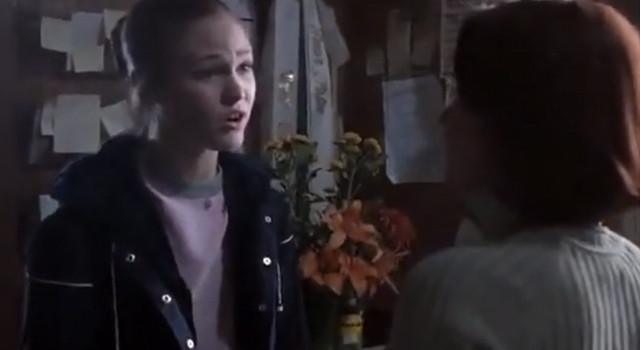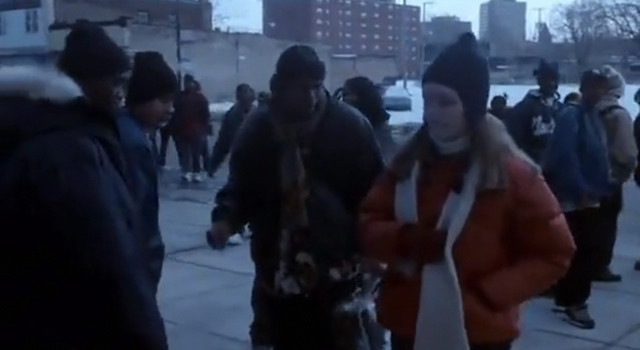Save the Last Dance might leave you pondering a few things – was it about dance, love, racial divides, or maybe just the early 2000s fashion? But one thing is undeniably clear: the movie’s soundtrack is as iconic as the film itself. Far from being just background music, the movie save the last dance soundtrack became a cultural phenomenon, perfectly encapsulating the energy and emotion of Sara’s journey from ballet to hip-hop. Let’s delve into why this soundtrack remains so unforgettable and continues to resonate with audiences today.
A Soundtrack That Defined a Generation
The Save the Last Dance soundtrack wasn’t just a collection of songs; it was a carefully curated experience that amplified every scene. For Sara, initially out of her element in a new Chicago high school, music becomes a bridge to a new world. Her initial unfamiliarity with hip-hop, despite its mainstream presence in 2001, sets the stage for her musical and personal transformation.
The soundtrack masterfully blends hip-hop and R&B anthems with pop sensibilities, mirroring Sara’s own blend of ballet grace and newfound streetwise rhythm. It’s a soundscape that reflects the film’s core themes: cultural exchange, personal growth, and the universal language of music and dance.
 Sara in her initial ballet-inspired outfit
Sara in her initial ballet-inspired outfit
The opening scenes, underscored by more melancholic, instrumental pieces, emphasize Sara’s initial isolation and grief. This musical backdrop highlights her privileged background and her emotional vulnerability after her mother’s tragic death. The soundtrack subtly uses music to underscore her character arc from the very beginning.
Hip-Hop and R&B Anthems: The Heart of the Soundtrack
As Sara steps into her new school and life in Chicago, the movie save the last dance soundtrack shifts gears. The introduction of hip-hop, initially foreign to Sara, is represented by tracks that are both contemporary and classic. Her bewildered reaction to hip-hop, exemplified by her apparent shock at hearing it, sets up the transformative power of the music she’s about to encounter.
Chenille and Derek become Sara’s guides, not just to a new style and social circle, but also to a whole new world of music. The soundtrack becomes a tool for Chenille and Derek to “save” Sara from her sheltered existence, as much as it is for Sara to discover a new part of herself.
 Sara’s initial encounter with hip-hop dance
Sara’s initial encounter with hip-hop dance
Tracks like Ice Cube’s “You Can Do It” and Fat Man Scoop’s “Put Your Hands Up” are not just party anthems; they are integral to Sara’s immersion into a different culture. These songs represent the energy and confidence that Chenille and Derek embody and that Sara gradually adopts. The soundtrack isn’t just playing music; it’s narrating Sara’s cultural awakening.
Fashion, Dance, and the Soundtrack Connection
The original article humorously points out Sara’s evolving fashion sense, and this is intrinsically linked to the soundtrack. As Sara’s wardrobe shifts from “fifth-grade, dance-looking tops” to more contemporary styles under Chenille’s guidance, the music also evolves to reflect this change.
When Chenille takes Sara under her wing and introduces her to a style makeover, the soundtrack celebrates this transformation. The shift in Sara’s clothing is mirrored by the shift in her musical taste and understanding. Music and fashion become intertwined elements of her journey.
The scene where Chenille helps Sara choose a new outfit is punctuated by Fat Man Scoop’s “Put Your Hands Up,” a song that screams confidence and liberation. This musical choice is not accidental; it’s a deliberate reinforcement of Sara’s movement towards self-assurance and cultural integration.
Love and Music: Setting the Romantic Tone
The romance between Sara and Derek is also heavily underscored by the movie save the last dance soundtrack. Music becomes their shared language, a way to connect beyond words and cultural differences. The soundtrack selections during their romantic moments are particularly noteworthy.
Jesse Powell’s “I Can Tell” plays as Sara and Derek share intimate moments, solidifying the romantic undertones of their relationship. These R&B tracks aren’t just background music; they are emotional cues that amplify the developing romance between the characters.
Even during moments of conflict, like the scene where K-Ci and JoJo’s “Crazy” plays during Sara and Derek’s breakup, the soundtrack intensifies the emotional impact. The music is carefully chosen to mirror the highs and lows of their relationship, making it more relatable and emotionally resonant for the audience.
The Climactic Performance and the Soundtrack’s Peak
The climax of the movie, Sara’s audition, is powerfully driven by Athena Cage’s “All Or Nothing.” This song isn’t just a catchy tune; it’s a declaration of Sara’s commitment and transformation. It underscores the culmination of her journey, both musically and personally.
The soundtrack reaches its peak emotional intensity during this scene. “All Or Nothing” embodies Sara’s determination and newfound confidence, highlighting how far she has come from the initially hesitant and unsure girl. The music becomes a triumphant anthem for her personal victory.
Montell Jordan’s “Get It On Tonite,” playing as the movie concludes, provides a sense of closure and celebration. It reinforces the theme of transformation and the positive impact of music and friendship. The final song is not just an upbeat ending; it’s a musical affirmation of the movie’s uplifting message.
Beyond the Movie: The Soundtrack’s Lasting Legacy
The Save the Last Dance soundtrack transcended the film itself. It became a cultural artifact, a snapshot of early 2000s hip-hop and R&B that resonates even today. The soundtrack album was a commercial success, proving its appeal beyond just fans of the movie.
The soundtrack’s enduring popularity speaks to its careful curation and its ability to capture a specific moment in time. It’s more than just a collection of songs from a movie; it’s a playlist that evokes nostalgia, energy, and the spirit of self-discovery.
In conclusion, while Save the Last Dance might spark debates about its plot or characters, there’s no denying the power and impact of its soundtrack. It’s a masterclass in how music can elevate storytelling, amplify emotions, and become an unforgettable character in its own right. The movie save the last dance soundtrack is not just a collection of songs; it’s an integral part of the film’s identity and a timeless playlist for anyone who loves the sound of the early 2000s.
